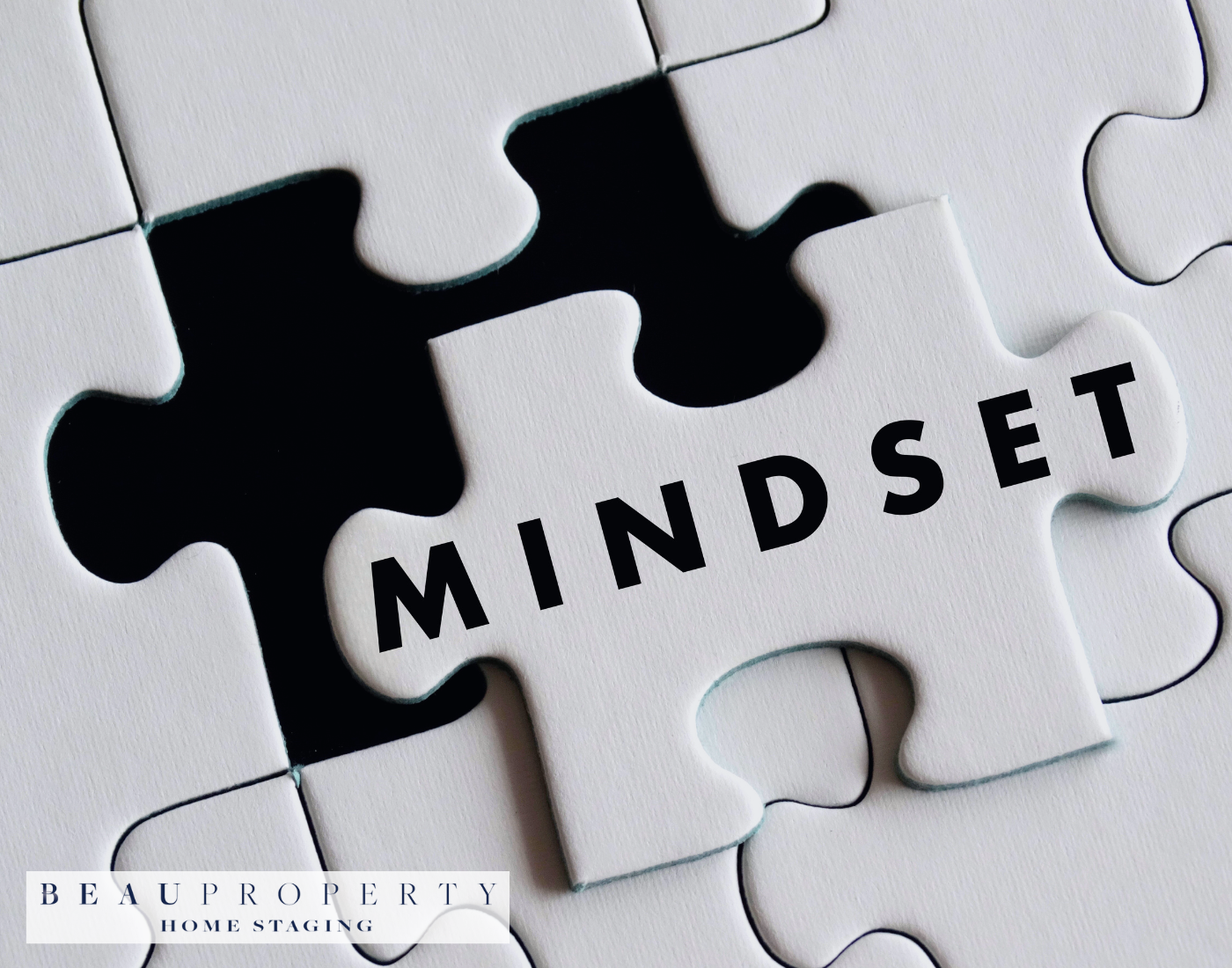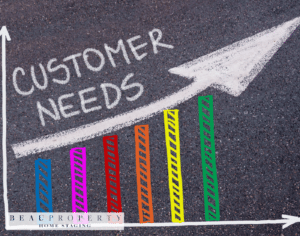Introduction to the Buyer’s Mindset
Definition and Importance of Understanding the Buyer’s Mindset
Understanding the buyer’s mindset is crucial for any business aiming to excel in sales and customer engagement. The buyer’s mindset refers to the mental state, attitudes, and perceptions that influence a buyer’s decision-making process. This encompasses their needs, wants, fears, motivations, and the factors they consider when evaluating a purchase. By comprehending this mindset, businesses can align their strategies to address potential buyers’ concerns, thereby enhancing their chances of conversion.
Developing an understanding of the buyer’s mindset starts with empathy. By placing yourself in the buyer’s shoes, you gain insights into their specific needs and desires, allowing you to tailor your messaging to resonate more effectively. This approach helps you present your products or services as the ideal solution to their problems, leading to better sales outcomes.
Key Components That Shape a Buyer’s Decision-Making Process
Several components influence the decision-making process of buyers. Recognising these elements can give you a strategic advantage:
Psychological Factors
Psychological components include motivations, perceptions, attitudes, and beliefs. These factors shape how buyers perceive their needs and the available solutions. For instance, a buyer’s attitude towards technology might affect their willingness to adopt a new tech product.
Social Factors
Social influences such as family, friends, and social networks play a pivotal role in shaping purchasing decisions. Recommendations and reviews from trusted sources can significantly sway a buyer’s choice. Understanding the social context of your target audience can help in crafting messages that resonate with their social circles.
Cultural Factors
Cultural elements like values, traditions, and norms shape preferences and behaviours. Brands that understand cultural nuances can connect more deeply with their audience and foster loyalty. For instance, marketing strategies in one region might differ significantly from those in another due to varying cultural norms.
Personal Factors
Personal components such as age, occupation, lifestyle, and economic status also affect buying decisions. A young professional may prioritise different product features than a retiree. Personalisation in marketing can thus significantly impact buyer preferences and decisions.
Economic Factors
Economic conditions, including the buyer’s financial status and broader economic environment, are critical in shaping purchasing choices. In periods of economic downturn, buyers may prioritise essential over luxury items.
The Decision-Making Process
The consumer decision-making process typically involves five basic steps:
- Problem Recognition: The buyer identifies a need or problem.
- Information Search: They gather information about possible solutions.
- Evaluation of Alternatives: They compare different products or services.
- Purchase Decision: They decide on the product or service to purchase.
- Post-Purchase Evaluation: They assess their satisfaction with the purchase.
Moreover, there are different buying modes like problem-solving and future-seeking, as well as non-buying modes such as being satisfied or euphoric. Knowing which mindset your buyers are in allows for more effective sales strategies.
Understanding these components helps tailor your approach to meet buyers’ expectations and needs, ultimately driving better results.
Empathy and Active Listening
Role of Empathy in Sales
Empathy serves as a vital component in the realm of sales, guiding professionals to navigate the intricate landscape of customer needs. By understanding the perspectives of buyers—essentially putting oneself in their shoes—salespeople can build trust, a foundation for any successful sale. Empathy helps salespeople appreciate the fears, desires, and needs that underpin their clients’ choices, thereby enabling them to present tailored solutions.
When a salesperson exercises empathy, it builds trust, which is crucial for converting prospects into customers. Zig Ziglar’s adage, “If people like you, they’ll listen to you, but if they trust you, they’ll do business with you,” encapsulates this idea well. Trust-based relationships open the door to increased sales, referrals, and customer loyalty. An empathetic approach to sales interactions sends a signal to customers that their concerns are genuinely understood and addressed, fostering long-term connections.
Techniques for Effective Active Listening
Active listening is another critical skill in the salesperson’s toolkit. It distinguishes itself from ordinary listening by involving full attention and a concerted effort to understand the speaker’s message. Active listening is a form of communication aiming to achieve mutual understanding, essential for resolving discrepancies between customer needs and product offerings.
To elucidate, here’s a breakdown of techniques for effective active listening:
- Pay Attention
Give the speaker your undivided attention and acknowledge their message. Avoid distractions, and make a conscious effort to listen to not just words but also tone and body language. - Show That You Are Listening
Use your own body language and gestures to convey your focus. Nod occasionally, smile, or use any other means to affirm that you are processing what the speaker is saying. - Provide Feedback
Paraphrase or summarise the speaker’s points to confirm your understanding. For instance, saying, “So, what you’re saying is…” can help ensure clarity. - Defer Judgment
Allow the speaker to finish their points before interjecting. Interruptions can frustrate the speaker and might lead to incomplete communication of their needs or issues. - Respond Appropriately
Offer relevant responses after the speaker completes their thoughts. Tailored, empathetic feedback can validate the speaker’s concerns and demonstrate a genuine effort to assist them.
By mastering these techniques, a salesperson can more effectively uncover the subtleties in customer interactions, make the customers feel valued, and provide solutions that genuinely address their issues. This nuanced understanding creates a more meaningful and productive dialogue, paving the way for successful sales engagements.
As we transition to the next element of understanding the buyer’s mindset, focusing on psychological triggers can further deepen our ability to influence buying decisions.
Psychological Triggers in Buying Decisions
Understanding the psychological triggers that influence buying decisions is a cornerstone of successful sales strategies. These triggers tap into the subconscious of consumers, guiding their behaviours and decisions in ways they’re often unaware of. This chapter delves into identifying common psychological triggers and applying them practically to influence buying decisions.
Identifying Common Psychological Triggers
Several psychological factors play pivotal roles in consumer behaviour. Key among these are motivation, perception, learning, beliefs, and attitudes. Motivation, an internal drive, can propel consumers to act, be it purchasing a product or adopting a new service. Perception, the way consumers interpret their surrounding stimuli, significantly impacts their buying choices.
Additionally, buying triggers are specific events or stimuli prompting consumers to make purchases. These include limited-time offers, recommendations from trusted sources, or the fulfilment of a particular need.
Effective salespeople often harness emotional triggers such as fear, trust, time, value, and a sense of belonging to influence consumer buying behaviour positively. These emotions can be powerful drivers of action when appropriately tapped into.
Applying these Triggers Practically to Influence Buying Decisions
When effectively applied, these psychological triggers can significantly boost sales conversions. Here are a few tactics:
- Creating Scarcity and Urgency: Imposing a time limit on a product or service creates a sense of urgency, compelling consumers to act swiftly due to the fear of missing out (FOMO). This tactic leverages the human instinct to avoid loss, driving quicker purchasing decisions.
- Utilising Social Proof: Leveraging customer testimonials, reviews, and endorsements can significantly influence potential buyers by tapping into the principle of social proof. People tend to follow the actions of others, especially those they respect or see as credible sources.
- Providing Value and Building Trust: Offering value consistently and building trust can foster long-term relationships with customers. Ensuring transparent communication, excellent customer support, and quality assurance can help in gaining consumer confidence and loyalty.
- Addressing Personal Needs: Tailoring marketing strategies to address the specific needs of individuals or their unique circumstances can result in higher engagement. Understanding the personal, social, cultural, and economic factors influencing their behaviour enables the creation of more personalised and compelling offers.
By effectively harnessing these psychological triggers, sales professionals can significantly influence consumer decisions, leading to increased sales and stronger customer relationships.
The Role of Insight in Sales
Understanding the Concept of Insight Selling
Insight selling is a strategic approach that focuses on providing valuable, data-driven insights to prospects and clients. Unlike traditional sales methods that emphasise product features or price, insight selling aims to offer unique perspectives that can help buyers understand their problems better and realise potential solutions. Essentially, it’s about positioning yourself as a trusted advisor who can offer actionable information relevant to the buyer’s current situation.
The core components of insight selling include researching, synthesising, and listening. Researching involves gathering data and trends from various sources. Synthesising requires analysing this data to generate meaningful insights. Lastly, listening is crucial as it enables salespeople to tailor their insights to the specific needs of the buyer.
Examples and Benefits of Utilising Insights in Sales Strategies
Using sales insights effectively is pivotal in today’s competitive market. Insights could range from data about the buyer’s business, industry trends, to larger economic factors impacting their market. For instance, sharing an analysis of market trends that highlights a shift in consumer behaviour can help a buyer understand potential opportunities or threats they hadn’t considered.
One practical example is during the customer acquisition process. By identifying “Unconsidered Needs” — issues that prospects didn’t even recognise as barriers to their goals — salespeople can provoke new thinking and present their solution as necessary. This technique can significantly increase the chances of closing deals by compelling buyers to act on newfound insights.
Similarly, for existing customers, introducing “hard truths” about their current performance compared to industry benchmarks post-reinforcement of your value proposition can stimulate discussions for upselling or cross-selling opportunities.
The benefits of leveraging insights in sales are numerous. They enhance customer retention by demonstrating a deep understanding of the buyer’s needs, thereby building trust and credibility. Furthermore, insights help in forecasting future trends, enabling proactive decision-making, and giving sales teams a competitive edge. Importantly, they shift the focus from just selling a product to solving a problem, improving overall sales effectiveness.
By integrating insight selling into their strategies, sales teams can differentiate themselves from competitors. The use of well-researched, relevant insights not only boosts the sales process but also establishes the salesperson as a knowledgeable resource who genuinely cares about the buyer’s success.
Transitioning smoothly from understanding how to leverage insight selling effectively, the next critical step is to align these insights and strategies with buyer needs to create a compelling, personalised sales experience.
Aligning Sales Strategies with Buyer Needs
Techniques to Align Product Offerings with Buyer Expectations
Aligning product offerings with buyer expectations is paramount to achieving sales success. This alignment begins with a thorough understanding of your buyer personas and their journey stages. Research shows that companies with tightly aligned sales and marketing teams see better conversion rates and customer satisfaction.
Understand Buyer Personas
A buyer persona is a detailed representation of your ideal customer, created from market research and real data. It includes demographic information, behaviours, needs, and motivations. To gather this information, use surveys, interviews, social media analytics, and more. By understanding who your target buyers are, you can effectively segment your market and tailor your product offerings to meet their specific needs.
Map the Buyer Journey
Mapping out your buyer’s journey helps identify their touchpoints and stages they go through before making a purchase. This journey typically includes five core stages: awareness, consideration, purchase, retention, and advocacy. By understanding these stages, you can design strategies that address specific concerns and needs at each stage.
Adapting Sales Pitch According to Buyer Personas and Their Journey Stages
It’s crucial to adapt your sales pitch based on an understanding of your buyer personas and their current journey stage. Customising your message increases its relevance and effectiveness, ultimately leading to higher conversion rates.
Tailoring the Message
At the awareness stage, focus on identifying the customer’s problem and presenting your product as a potential solution. Use simple and empathetic language to build rapport. When the buyer moves to the consideration stage, highlight the unique value proposition and competitive advantages of your product. Persuasive and data-driven language is effective here. In the decision stage, your goal should be to address any objections confidently and close the sale with a clear call to action.
Testing and Optimising
Continuously test and optimise your sales pitch to ensure its effectiveness. Use A/B tests, gather feedback from prospects, and measure conversion rates to make informed adjustments. This process helps in refining your message to better meet buyer needs and align with expectations.
Integrating these techniques can lead to more personalised and effective sales strategies. Companies that continually adapt and optimise their sales efforts to meet buyer expectations stand to benefit significantly in terms of customer satisfaction and sales performance.
As we move forward, understanding the impact of digital tools on buyer decisions will further enhance how organisations adapt their strategies and engage with potential customers.
Influence of Digital Tools on Buyer Decisions
Impact of Digital Presence on Buyer Behaviour
Digital tools have profoundly impacted buyer behaviour. One of the most significant ways is through the enhancement of brand awareness and the collection of consumer insights. By leveraging data analytics, businesses can target specific demographic segments with personalised content and advertisements, effectively influencing buyer decisions.
Consumers now have access to vast amounts of information at their fingertips. Using smartphones and other digital devices, they can research products, read reviews, and compare prices instantly. This abundance of information empowers consumers to make informed decisions and changes traditional buying processes by making purchasing more seamless and convenient.
Moreover, the integration of digital tools in social media platforms plays a critical role. Social media not only provides a platform for consumers to interact with brands but also influences their purchase decisions through social proofs like reviews and feedback from peers.
Strategies to Enhance Online Engagement and Conversion Rates
To fully benefit from the digital landscape, businesses must adopt strategies that enhance online engagement and increase conversion rates:
- Personalisation: Utilise data analytics to deliver tailored content and advertisements. This involves understanding customer preferences and crafting messages that resonate with their needs and interests.
- Social Media Integration: Engage potential customers on social media platforms by creating targeted ads and posts. Platforms like Facebook and Instagram have integrated shopping features, allowing consumers to make purchases directly from their social media feeds.
- Optimising Mobile Experience: With the rise of mobile shopping, ensuring that websites and online stores are mobile-friendly is crucial. This includes having a responsive design and easy navigation to facilitate a smooth shopping experience.
- Using AI and Chatbots: Implement AI-driven chatbots for customer interaction, providing immediate responses and assistance. Chatbots can capture valuable data on consumer pain points, allowing businesses to refine their products and services.
- Remarketing: Employ strategies like cart abandonment emails and push notifications to re-engage customers who have shown interest but haven’t completed their purchases. This reminds and encourages them to return and finalise their transactions.
By effectively leveraging these strategies, businesses can enhance their digital presence, engage more consumers, and improve their conversion rates. Adapting to the rapid digital shifts is crucial for businesses aiming to remain competitive and meet evolving consumer expectations.
Understanding and utilising digital tools effectively can significantly influence buying decisions, paving the way for advanced sales strategies and improved customer relationships.
Conclusion: Transitioning Prospects to Customers
Transitioning prospects into loyal customers requires a nuanced understanding of various dynamics in sales interactions. Let’s summarise the essential elements covered previously and explore the continuous adaptation essential for mastering sales.
Summarising Key Takeaways
Understanding the buyer’s mindset is foundational to closing more deals. Recognising the psychological, social, and economic factors influencing buyer behaviour can dramatically enhance sales outcomes.
Empathy and active listening are pivotal in unearthing a buyer’s true needs. Techniques such as providing feedback and maintaining an open dialogue help build trust, allowing salespeople to tailor their offerings effectively.
Psychological triggers play a significant role in influencing buying decisions. Leveraging these triggers, such as creating urgency and using social proof, can lead to higher conversion rates.
Insight selling involves using deep knowledge of the customer’s challenges and market to offer solutions that add genuine value. Declaring a shift from product-centric pitches to insight-driven conversations fosters a stronger connection with the buyer.
Aligning sales strategies with buyer needs is crucial. This involves understanding buyer personas and their journey stages, adapting pitches to relay how the product or service solves prevalent issues uniquely.
Digital tools are reshaping buyer decisions significantly. A robust digital presence, personalised engagement, and leveraging AI for customer insights are essential strategies for contemporary sales success.
Encouraging Continuous Learning and Adaptation
Sales approaches must continuously evolve to match dynamically changing market conditions. Continuous learning and adaptation are key for staying competitive.
- Invest in Training: Regular training on emerging sales trends, tools, and techniques ensures sales teams remain competent.
- Seek Constructive Feedback: Actively seeking feedback from clients, peers, and mentors helps in refining sales strategies.
- Embrace Innovation: Experiment with new ideas, approaches, and technologies to uncover more effective sales methodologies.
- Stay Updated: Keep abreast of the latest market trends, customer preferences, and technological advancements.
- Create a Learning Culture: Encourage a company-wide culture of learning and innovation, where failures are viewed as opportunities for improvement.
Lifelong learning ensures that sales professionals stay ahead in a rapidly evolving marketplace. By continually adapting and refining techniques, businesses can better meet buyer expectations, leading to stronger customer relationships and enhanced sales success.








